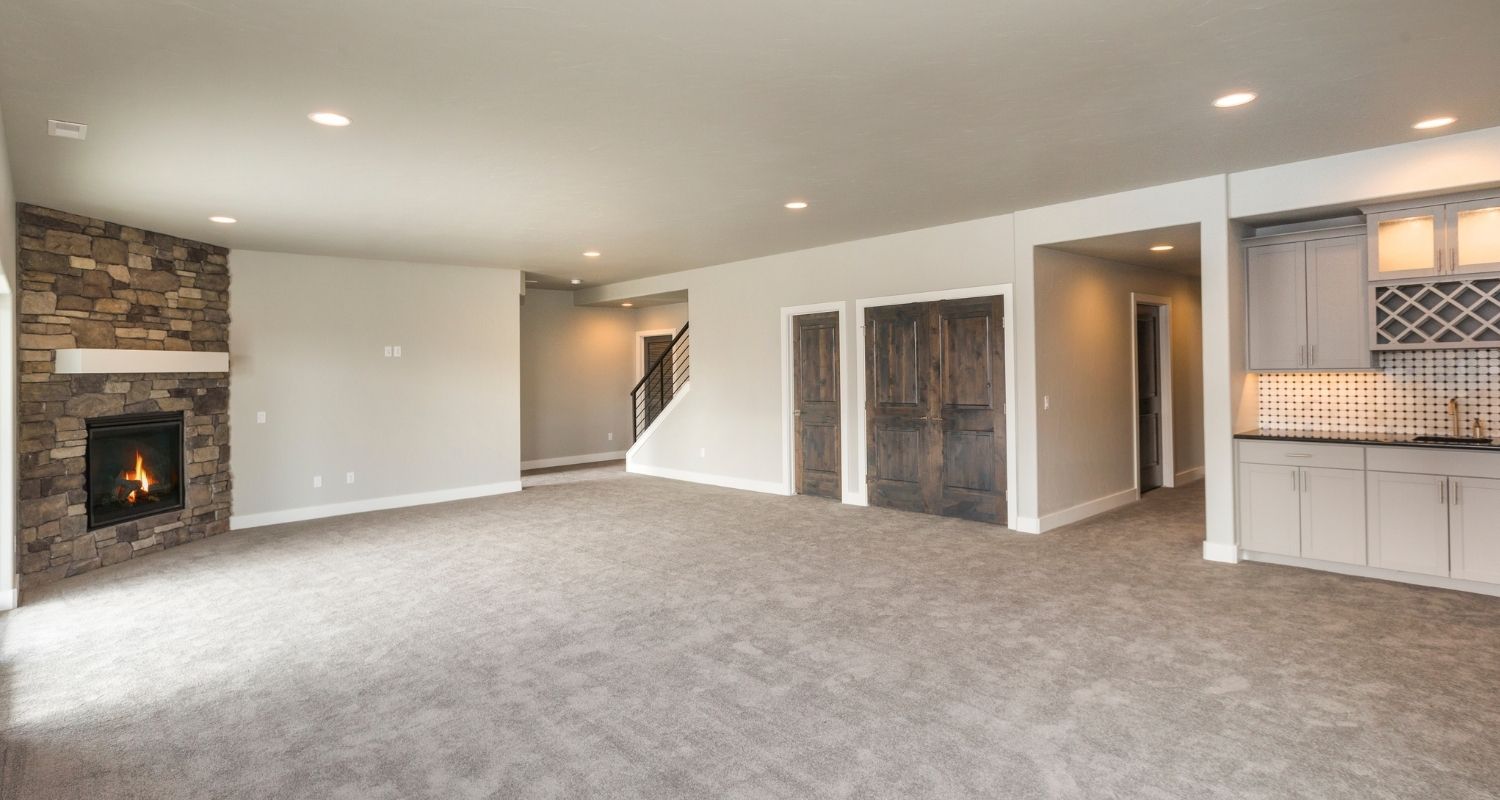Table of Contents
- 5 Factors Affecting the Cost of Basement Renovations
- Options for Your Renovated Basement
- Humidity Level Issues
- How To Finish Your Basement Floor
5 Factors Affecting the Cost of Basement Renovations
1. Basement Size
The first and most important factor is the square footage of your basement. All expenses associated with your basement will be decided by the floor area available. The floor’s size dictates the cost of finishing and drywall.
2. Labour
The second aspect is labour costs. If your project is too expensive, you may choose to adopt a do-it-yourself approach, but this is fraught with risks.
3. Bathroom
The third consideration is whether to install a bathroom. Installing a bathroom in your basement may be rather costly. The bathroom’s design (including whether it is fully tiled or partially tiled), will decide the project’s entire cost.
4. Exit
The presence of an exit route is the fourth element. This entails the installation of an escape window which may be utilized in an emergency, rather than relying only on the stairs. This will increase your budget.
5. Flooring
The fifth element to consider is the flooring. What are your plans for the floor? How about a rug? Is the wood engineered, wood laminated or tiled? A concrete floor is the least expensive choice or you may add a rug to it.
Options for Your Renovated Basement
You can consider the following options:
- Establish a home gym. A basement gym can increase the value of your property. However, the equipment may add thousands to the cost of your basement renovation.
- Add a second living room (or recreation area). Adding more gathering space to your house significantly increases its value, particularly if you start with an unfinished basement.
- Establish a wet bar. A wet bar can add value to a property at any stage of its life.
- Include a playroom for the children. Bear in mind that a playroom may greatly complicate selling your house to a family without children. Therefore, keep this in mind when you determine how to renovate your basement.
- Create a gaming room. A gaming room can increase the attraction of any family member, which can be a selling factor when the time comes to leave the property.
- Include a bedroom. To qualify as an “official” bedroom for house appraisal purposes, you must ensure the bedroom has at least two exits. The basement is an excellent location for a spare room, or for an older child to have their own area.
- Include a home theater. As with a living room, a home theater increases the value (and usable space).
- Create a designated laundry area. A large laundry room may not significantly impact your home’s total worth; however, it may appeal to consumers seeking more usable space.
Humidity Level Issues
Relative humidity levels in your basement (and throughout your house) should be kept at or below 50%. Such humidity does not imply your basement renovations must be abandoned. This might simply indicate you need to adjust your plans. The following strategies can assist you in dealing with excessive humidity levels:
- Determine any sources of dampness. If you observe water after heavy rains, you may have an unrepaired leak somewhere. Is there any water entering the basement?
- Consider installing a dehumidifier. Keep it clean and change its filters regularly to avoid mold and mildew development.
- Avoid carpeting your basement. While carpet may provide a sense of warmth and coziness to your basement, it can also gather moisture. Rather than this, go for a hard floor and add design and comfort with rugs.
- Throughout the year, keep the basement’s air moving. If the temperature in your basement is fairly constant, you may be tempted to avoid climate control. Maintaining air circulation in the space, on the other hand, assists against excess moisture.
How To Finish Your Basement Floor
- Subflooring should be installed, particularly if your basement has a high humidity level. The polystyrene insulation sheets should be placed first, followed by the plywood sheets. This will provide a stable foundation for flooring – and act as a moisture barrier.
- Consult the manufacturer’s directions for your type of flooring. Certain flooring varieties such as bamboo (and even laminate) may need some time to acclimatize to the area in which they will be installed. Open the boxes and set them aside for a few days while completing other remaining activities.
- Install the flooring. To guarantee a smooth floor, take precise measurements around outlets, vents and entrances.
- If necessary, seal the floor. A seal can help protect the floor from moisture damage and wear and tear caused by daily usage. This is an excellent method for protecting attractive tile flooring.
Choose NYCO Renovations for your basement renovations needs. Visit us online or call us in the Moncton area at (506) 866-3996 today.
< Previous | Home | Next >



